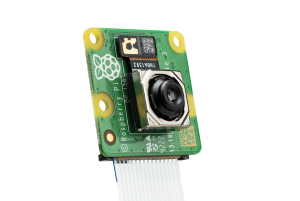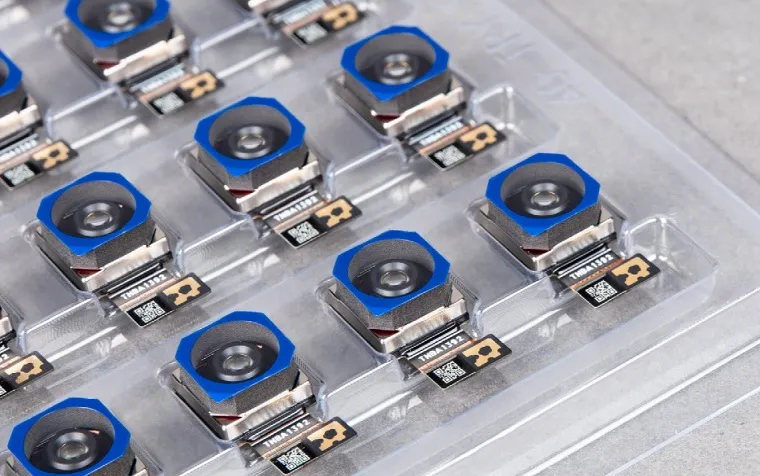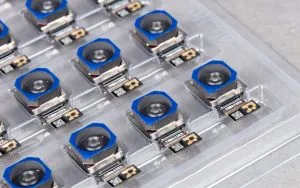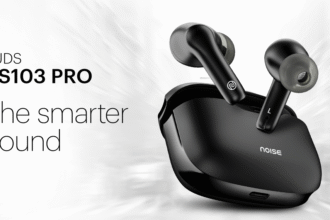They cost from $15 and provide a way – on custom circuit boards – to plug in the sensor assembly for very compact implementations.
Note that this is really for OEMs building their products on top of the Pi technology. But hey, it’s of interest being Raspberry Pi. And, if nothing else, it’s an intriguing glimpse at the depth of detail behind the technology.
This use of the sensors will be for embedded applications that have to fit into a small form factor, where the Camera Module itself (with its 25 × 24mm module footprint) can not be used.
There are four options for the sensor. These cover visible-light and infrared-sensitive variants, and then a standard or a wide field of view.
Sensor Assemblies
 Announcing the news, Mike Buffham – Director of Product Management at Raspberry Pi – writes:
Announcing the news, Mike Buffham – Director of Product Management at Raspberry Pi – writes:
“Raspberry Pi Camera Module 3 Sensor Assemblies offer the same IMX708 4608×2592 (11.9 megapixel) sensor, with 1.40μm pixels, and the same Phase Detection Autofocus (PDAF) capability as Camera Module 3. We are providing reference schematics and a bill of materials to assist you in integrating the required support components onto your own PCB.”
“Like Camera Module 3, Camera Module 3 Sensor Assemblies are available in both visible-light and infrared-sensitive (NoIR) variants, and with either a standard (75° diagonal) or a wide (120° diagonal) field of view; and like Camera Module 3, there is a $10 price difference between the standard FOV variants and the wide FOV variants.”
You can read the full product brief on the Raspberry Pi website.
Note that the , the sensor assembly’s operation is fully supported by the libcamera library and the libcamera-based Picamera2 and rpicam-apps libraries. This includes its rapid autofocus feature.
 Camera Module 3
Camera Module 3
The Camera Module was one of the first accessories for the Raspberry Pi. And the unit reached version 3 back in 2023.
The 12MP Camera Module 3 added autofocus, dynamic-range imaging.
See also: New flagship Raspberry Pi 5 doubles memory, offers carbon credits








